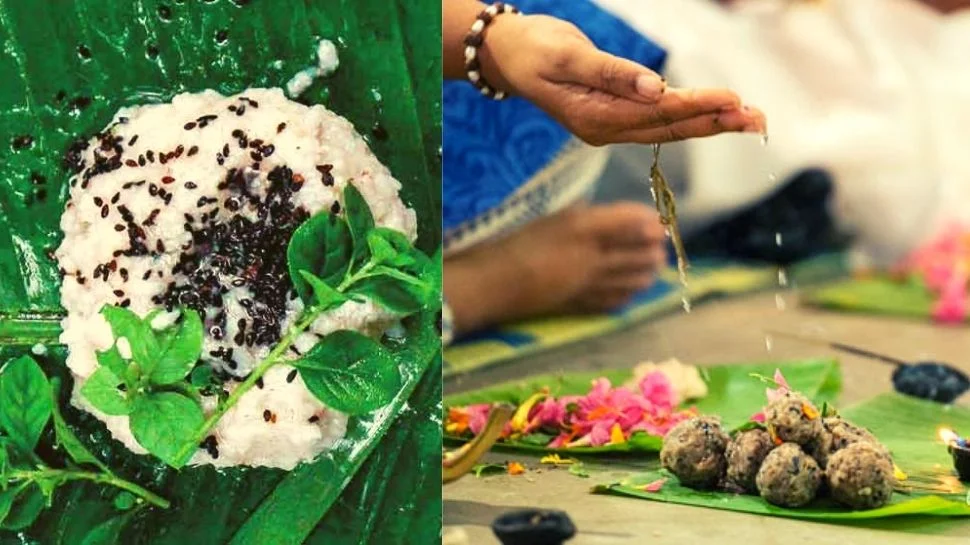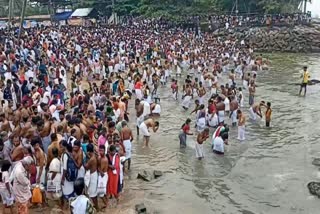Karkidakam Bali Rituals in Kerala: A Monsoon Prayer for the Past and the Future
By: Safreena
If you’ve ever been in Kerala during Karkidakam, you’ve probably seen them people dressed in simple clothes, walking silently toward a river or beach at dawn. It’s a quiet but powerful sight. They come with nothing flashy. Just rice balls, sesame seeds, maybe a coconut or two, and a handful of flowers. This is Bali Tharpanam, or Vavu Bali, a ritual for the ancestors that has been part of Kerala’s rhythm for generations.
Even as a child, I remember watching my father and grandfather take part in it. There was no showiness, no big celebration. But it felt serious, and strangely peaceful. I didn’t understand all the meanings back then, but I sensed that this was about more than just remembering the dead. It was about staying connected to our people, to our land, and to something much bigger than ourselves.
Honoring Ancestors, the Kerala Way
The word “Bali” in this context doesn’t mean sacrifice it means offering. In Kerala’s tradition, this offering is a way to honor our forebears. The ritual is mostly performed on the new moon day in the month of Karkidakam, which falls around July or August. That timing is not random. It’s when the monsoon is at its peak. The rivers are flowing, the trees are green, and the air carries that deep scent of wet soil.
People usually gather at places like the banks of the Pamba River, the beaches in Alappuzha, or temple tanks in their local villages. There, priests guide them through the rituals. They offer pindam balls made from cooked rice and sesameand pour water with prayers, hoping it reaches the souls of the departed. The idea is simple: we give them peace, and in return, we receive their blessings.

The Role of Nature in These Rituals
One of the most striking things about Bali rituals is how closely they’re tied to the natural world. Unlike many modern festivals that take place in halls or homes, this one belongs to rivers, lakes, and the sea.
There’s something humbling about standing barefoot on wet sand while rain drizzles lightly and the waves crash nearby. That’s probably the point. In Hindu belief, water is sacred it purifies, it connects worlds, and during Bali, it becomes the path that prayers travel on.
And if you think about it, these rituals couldn’t happen the same way without the monsoon. The rivers would be too shallow, the lakes would dry up, and the spirit of the ceremony would feel… incomplete. The rain, in a way, plays its own part in the ritual.
What We Offer and Why
The items used in the ritual are all natural, simple, and seasonal. Cooked rice stands for nourishment and life. Coconut, broken open during the ceremony, represents purity and surrender. Sesame seeds are believed to carry prayers and cleanse the soul. And then there are the Tulsi leaves fragrant, sacred, and soaked in rainwater.

None of this is mass-produced or plastic-wrapped. Everything comes from the earth, and everything returns to it. I’ve always found that aspect beautiful. It’s not just about respecting the ancestors; it’s about respecting the planet that gave us all life.
What’s more, the availability of these offerings depends on the rains. If the monsoon is strong and timely, there’s plenty. But if the rains come late or not at all, farmers struggle, and so do the rituals.

It’s a quiet reminder of how linked our spiritual and physical lives really are.
A Time of Challenge and Reflection
Karikidakam, the month in which Bali rituals are held, hasn’t always been easy for people. Traditionally, it was known as the “month of hardship.” The heavy rains made farming nearly impossible. Roads turned to mud, trade slowed down, and sickness spread. People turned to prayers and rituals to find strength, comfort, and hope.
Doing Bali in this month became a way of asking for protection not just for those who passed, but for those still here. Even now, when we have better infrastructure and healthcare, the monsoon still brings its share of challenges. And in a way, the ritual still offers the same quiet sense of grounding.
The Eco-Friendly Side of Ritual
One thing that’s worth highlighting is how environmentally conscious these rituals are without even trying to be. Everything used in a traditional Bali ceremony is biodegradable. No Styrofoam plates.
No plastic flowers. Just rice, leaves, and water
It’s a lesson modern society could learn from. So many of today’s religious festivals leave behind garbage piles. But here, you offer to nature and you leave nothing behind. That’s how deeply rooted the idea of balance is in Kerala’s culture.
The Threat of Climate Change
Sadly, not all is well. In the past few years, Kerala has seen some of its worst floods. The 2018 and 2019 floods washed away not just homes and roads, but also sacred riverbanks and beachside ritual spots. Rising sea levels have swallowed parts of the coast. The rains, once predictable, now come in fits and extremes either too much or too little.
This shift has already started to affect when and how Bali rituals are performed. Some people are forced to find new places for ceremonies. Others struggle to gather the traditional materials. It’s a quiet disruption, but a meaningful one.
Still, there is resilience. Communities, environmental groups, even some temples, are coming together to protect rivers and preserve coastal zones. There’s a sense that if we don’t take care of nature, we’ll lose not just the environment—but the traditions that give our lives meaning.
Looking Ahead
Kerala’s Bali rituals are more than religious ceremonies. They’re a reflection of how life, death, nature, and community are all woven together. In a time when the world feels increasingly disconnected from the natural world, these rituals offer a powerful reminder: spirituality doesn’t have to be loud or extravagant. Sometimes, it’s about waking up before dawn, walking barefoot to a river, and offering a handful of rice to the past.
And maybe, in that small, quiet act, we find a little hope for the future too.
Tag: Bali Rituals in Kerala: A Monsoon Prayer for the Past and the Future. Uncover the essence of Karkidakam Bali Rituals in Kerala, a monsoon tradition that pays homage to ancestors and paves the way for future blessings. Learn more.
